Teaching Romanian Language at the University of Washington
The University of Washington was the first in the US to welcome a Romanian Fulbright Lecturer to teach a language class. It was a joint effort of the UW and Fulbright Commission, sponsored by the Council for International Exchange Scholars, that made possible the teaching of Romanian in Seattle.
During the Cold War

It was the fall quarter of 1967 when American students enrolled in Romanian classes taught by Professor Theodor Hristea. Already a published author, highly regarded as a specialist in etymology (history of words and their transformation), Hristea laid the basis of a long tradition of teaching Romanian at this university.
Theodor Hristea (1930-2009) started his career as a researcher at the “Iorgu Iordan-Alexandru Rosetti” Institute of Linguistics in Bucharest. In 1962, he got tenure at the University of Bucharest and became a full professor in 1970. He authored Probleme de etimologie [Challenges in Etymology] in1968, coordinated the volume Sinteze de limba română [Syntheses of the Romanian Language] in 1984, and published Probleme de cultivare şi de studiere a limbii române contemporane [Difficulties in the study of Contemporary Romanian] in 1994. He also contributed articles to the monumental work sponsored by Romanian Academy, Dicționarul tezaur [Thesaurus Dictionary] published after his death in 2011. He signed over 300 studies on Romanian. Before coming to Seattle he taught Romanian in Prague. After his two-year term as a Fulbright scholar at the UW, he taught at Boston College for two more years. He was also a Romanian lecturer in France at Université "Jean Moulin" in Lyon and Université de Saint Etienne.
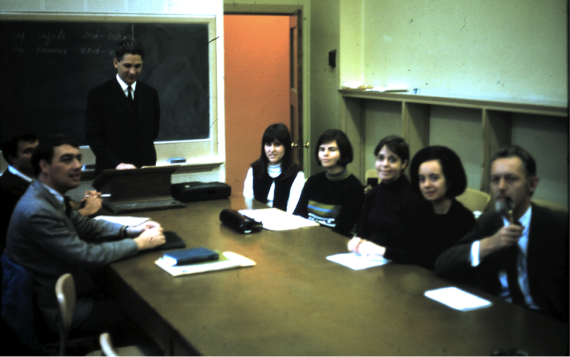
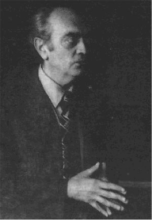
In 1969, Dan Grigorescu, a specialist in Comparative Literature, took over the Romanian class. He added a 5-credit course in Romanian Literature in its European context.
Dan Grigorescu (1931-2008) possessed an encyclopedic spirit, encompassing arts and literature, history and aesthetics. He was a gifted translator, witty essayist and journalist, prominent literary critic and art historian, and respected World Literature and Comparative Literary Studies Professor. Author of forty books, Dan Grigorescu became the Head of the Comparative Literature Department at the University of Bucharest in 1990 and a full member of Romanian Academy in 2004. While in the US, he succeeded in promoting Romanian arts in the US as a Fulbright scholar in Seattle, Portland, and Los Angeles (1969-71), and as the Director of Romanian Library in New York 1971-74. He also promoted American art in Romania. He published Pop-Art (1974), American Art (1975), Chronological Dictionary of American Literature (1979), Grand Canyons (1979), Between Culture and Coca-Cola (1993), and The Twentieth-Century American Novel (1999).
Mircea Eliade at the UW
The crucial moment that boosted the interest in Romanian language and culture was the Conference on Romanian Language and Literature that took place at the UW in 1972. Professor James Augerot invited all Romanian scholars – those with Romanian passports as well as émigrés – to the UW for the first academic Romanian conference. Mircea Eliade presented a paper on Solar Rites, Radu Florescu talked about the myth of Dracula and Vlad the Impaler, Stephen Fisher-Galati gave a lecture on Twentieth-Century Romania, Marin Sorescu read some of his poems. This select gathering had among special guests the historian Constantin Giurescu, who was teaching for the year at Columbia, Dan Grigorescu of the Romanian Library in New York, and Georgene Lovecky of the Fulbright Program. It was then that James Augerot and Michael Impey proposed the foundation of the Society of Romanian Studies that started functioning in 1973.
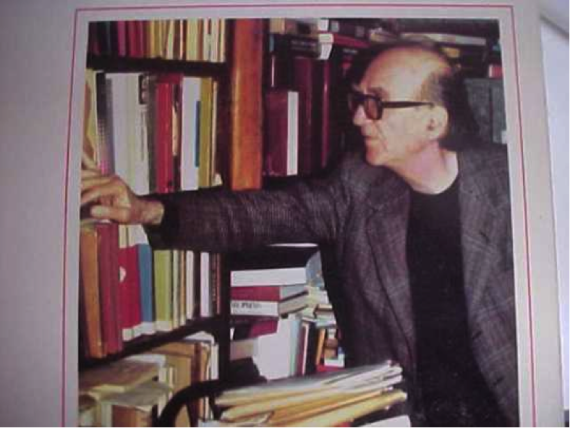
It was under these great auspices that Romanian studies have grown in the US. It was also the Cold War era that made Romanian classes gather more students as the Romania of the 1970s was still probably the most open country in the communist bloc.
The Pre-1989 Success of Teaching Romanian
In 1971, Emanuel Vasiliu, professor of general linguistics and language philosophy at the University of Bucharest, came to Seattle.
Emanuel Vasiliu (1929-2001) was an outstanding theoretician of language who implemented the newest approaches to the study of language at that time. His initial interest in Romanian phonology (the discipline concerning the organization of sounds) led him to the study of meaning and sentence structure in Romania. In 1972, he published in Hague two major books: Outline of a semantic theory of Kernel sentences and The transformational syntax of Romanian. This is not a coincidence that he worked on these two books in English while he was in Seattle, benefitting from the University of Washington rich library and the inspiration he got from teaching Romanian to foreign students. In 1992, he was elected in Romanian Academy. Between 1991 and 2001 he was the director of the “Iorgu Iordan-Alexandru Rosetti” Institute of Linguistics in Bucharest. He voted against resurrecting the old spelling with â instead of î, and against reintroducing the plural form of “sunt” instead of sînt for the third person of the verb “a fi” [to be]. Interestingly enough the two linguists in Romanian Academy at that time (1993) did not agree with the change.
For more read http://eujournal.org/index.php/esj/article/viewFile/2377/2250 and http://en.wikipedia.org/wiki/Talk%3ARomanian_alphabet
Mircea Borcilă from Babes-Bolyai University in Cluj brought a new direction to Romanian teaching at the UW in 1972. As a specialist in American poetics and Romanian poetical style he bridged the two cultures through teaching Romanian.
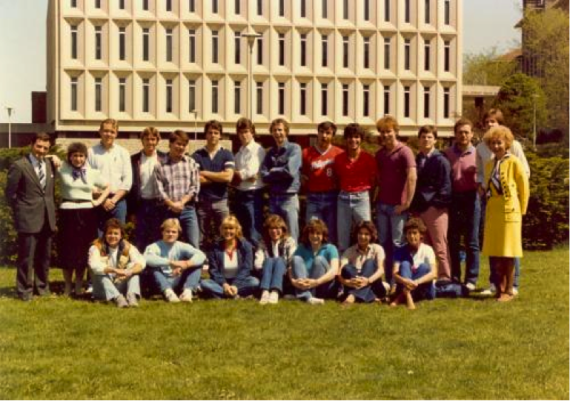
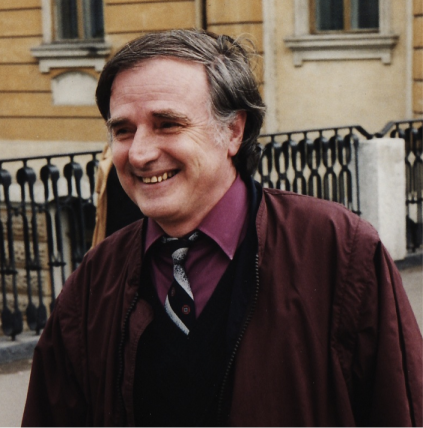
Borcilă (1942) combined the generative grammar approach to Romanian with an integrative methodology. In 1981, he published Poetica americana, orientari actuale [American Poetics, Current Trends] (1981); between 1981-87, he coordinated the five volume seminal work Studii de stilistica, poetica si semiotica [Studies in Style, Poetics, and Semiotics]. In 1992, he founded the Integrative Studies Research Center in Cluj.
Marin Petrișor (1933-2018) was probably the most loved Romanian lecturer at the UW. His students of 1974 through 1976 still recall his classes and humor with love. A dialectologist, Petrișor collaborated to the Complete Atlas of the Iron Gates Area in 1972, which received the Romanian Academy prize. He focused on the study of dialects from Banat and Oltenia to which he dedicated two volumes.
Ion Şeuleanu (1939-2011) taught at the UW between 1976 and 1978. He was a folklorist that facilitated the acquisition of an important collection of Romanian books on folklore. He was the chief editor of Studia Universitatis “Babeş-Bolyai”: Philologia and a major contributor to the Romanian Folkloric Archive. He also taught Romanian at UCLA (1984-1986), in Budapest (1981), Rome (1994) and Szeged (2000).
Aurel Sassu (1943-) taught Romanian between 1981 and 1983. After he finished his Fulbright grant, he continued his research at the Library of Congress. Before coming to Seattle he worked as a researcher at the Sextil Puşcariu Institute of Linguistics and Literary Studies in Cluj. After his term in Seattle he became a professor at the Cluj University. He published several volumes of literary essays, studies of literary psychology, and Romanian hermeneutics. In 1993, he authored the first part of Cultura română în Statele Unite și Canada. Nostalgia românească [Romanian Culture in the US and Canada. Romanian Nostalgia]. In 2002 he published the second part of the study of reception of Romanian culture, entitled Cultural Societies. He also wrote George Pomutz. The Legend Lives On (a biographical study of the American general of Romanian descent, a hero of the Civic War and later, general consul to Russia). Sasu continued his research on American culture and in 1999 he published Strategia disperării. Jurnal American [The Despair Strategy. American Journal]. Interested in the contribution of Romanians to American culture he collected material for a Dictionary of Romanian Writers in the US and Canada (2001) and for the volume Comunitățile românești din Statele Unite și Canada [Romanian Communities in the US and Canada] (2006).
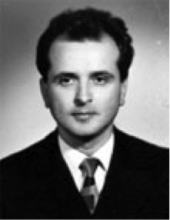
There is no evidence of Romanian Fulbright Visiting professors 1985-1989, although James Augerot and James Algeo continued to teach the language during that time.
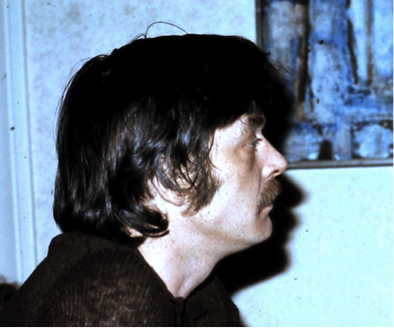
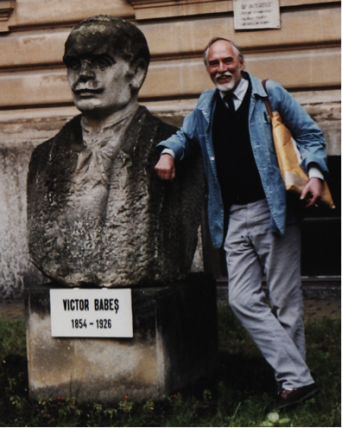
The Aftermath of Communism
1989, the year of the fall of communism, stirred more interest in Romania and its culture and language. Liliana Ruxăndoiu came to Seattle only two months after the December Revolution. She taught Romanian for two years. She had previously visited Seattle in 1971 when she did research at the Research Centre for the Language Sciences at Indiana University, Bloomington, Illinois.

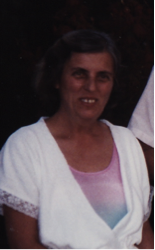
Ruxăndoiu was a professor of Romanian dialectology and pragmatics. She published six books on Romanian linguistics. Her most recent books are Limbaj si comunicare. elemente de pragmatica lingvistica [Language and communication. Elements of Linguistic Pragmatics] and Conversatia. Structuri si strategii [Conversation: Structures and Strategies] have become best sellers.
Rada Proca, a young scholar who graduated only three years before landing in Seattle, in 1991 taught Romanian for the next two years. At the beginning of her career, she took advantage of this opportunity and gathered substantial material for her book on Practical Grammar of English which she published later in 1999. Author of more than 50 articles dedicated to English literature and language, and comparative linguistics, Rada Proca is an associate professor at the “Gheorghe Asachi” Technical University, Iași.
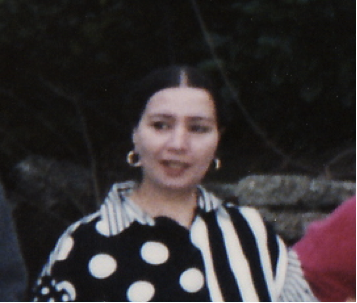
After 2000, a new policy limited the time of the grant for Romanian scholars to two quarters, which does not allow enough time to see the one-year cycle through fruition. Between 2001-2, Marina Cap-Bun, then an associate professor at the Ovidius University of Constanta, succeeded in getting paid by the Slavic Languages Department for another quarter and finished her class. Author of three books on Romanian classics, Marina put on a Caragiale play with her students and was the first one to establish a direct connection to the Romanian community in Seattle. She also organized a field trip to Maryhill, a unique museum established by a wealthy railroader who was an admirer of the Romanian Queen Mary to whom he dedicated this museum on the banks of the Columbia River.
The last Fulbright Visiting professor was Ileana Marin. She spent almost eight months between December 2003 and August 2004. She both taught and did research on American representation of Romania. A specialist in Comparative Literature, Ileana Marin delivered lectures on Romanian contemporary literature and its relations with the world literature in the University of Las Vegas and at UCLA. By the time she came to the US she had published three books on Pre-Raphaelite poetry and painting and one on the impact of Greek tragedies on modern European literature. With long experience in teaching Romanian to foreign students at the International Summer Courses of Romanian Language and Civilization, Ileana Marin addressed cultural issues along with grammar and conversation. It is her goal to make teaching Romanian regularly possible as it is her belief that the second-generation Romanian Americans need to take advantage of their heritage and present themselves as multicultural in order to become successful citizens in a global world.
What We Can Do to Reinstate the Tradition of Teaching Romanian
With Fulbright grants for only four months now, covering only one quarter, the rest of the academic year needs to be financially supported by an endowment. With the current rate of 4 % interest, the Romanian Studies Fund has to raise about $ 250,000 in order to pay the lowest salary for two quarters. It will take generosity and belief that this is the right investment in the young generation’s future to see the project through. However, it is not impossible: the Poles did it as did the Serbs and Croatians before. It will take us 4 years and 250 people who donate $250 / year to achieve our goal. Microsoft and Boeing match donations to the UW, which will help us raise the endowment even faster. It will be a great beginning to collaborate with the Fulbright Commission.
To have a full academic position for a faculty member who can participate in the decision making process of a department we will have to raise an endowment of $500,000. Big donors give their names to the chair: it will be nice to have a Romanian name attached to the Romanian Studies chair. It will give us even more exposure in the American academia. The name of the big donor(s) will be forever remembered: students who will take a class in Romanian studies will put that name down on their applications and their academic documents; the UW will mention that name on official documents related to the program; and finally, that name will bridge two cultures that nowadays are closer than ever.
Americans Go to Romania as Fulbright Scholars
The collaboration between the UW and the Fulbright Commission has worked the other way around as well. American students who took Romanian at the UW received Fulbright grants to go to Romania to teach English and do research on Romanian culture in order to facilitate the understanding of that part of the world to their fellow citizens. The first Romanian Fulbright scholar was James E. Augerot, who went in 1964 to the Babes-Bolyai University in Cluj. He also studied Romanian and earned his Ph.D. from the University of Washington in 1967 with a dissertation on Romanian phonology.
James Algeo, professor of Spanish and Portuguese in the Romance Department of the University of Washington, also spent a year at Babes-Bolyai.
The next who applied to do research in Romania was journalist and Komo 4 News reporter James Compton. He spent a whole year between 1969 and 1970 interviewing Romanian writers, artists, and filmmakers about their work and how they define Romanian identity. Among those who answered Compton’s questions were Ana Blandiana, Alexandru Ivasiuc, Marin Sorescu, George Apostu, and Lucian Pintilie. In 2006 he returned to Romania to see how much these Romanians’ opinions had changed. James Compton’s papers are held by Ileana Marin, who is working on putting them together into a book.
As research continues and more documents emerge, we will add the names of others who participated in the exchange between the University of Washington and Romanian universities.